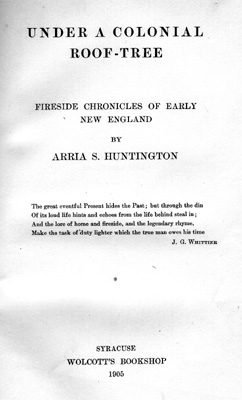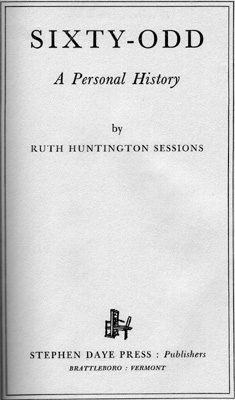INTRODUCTION | FAMILY AND FARM | WORK AND COMMUNITY | RELIGION AND REFORM | LEISURE AND IMAGE | NOSTALGIA AND HISTORY
The Fourth Generation at Forty Acres: Leisure and Image
Frederic Dan Huntington, Bishop.
Bishop Frederic Dan Huntington, the youngest of Elizabeth and Dan Huntington’s children, bought his siblings’ shares of the family farm soon after his mother’s death in 1855. Although his permanent residence was located in Syracuse, New York, Bishop Huntington and his family returned to the Hadley estate for extended vacations each summer until 1904. This new pattern of use marked an important shift: the farm’s importance as a productive venture decreased while its importance as an anchor of personal and family identity increased.
Frederic Dan Huntington, farmer.
The idealized independent yeoman farmer had been a powerful symbol since the time of Thomas Jefferson, but in reality, he never existed, as all families depended on one another for essential goods and services. However, in nineteenth century New England, as commerce and industry increasingly dominated the economy, farming was indelibly etched in popular imagination. Frederic Dan Huntington was no doubt affected by this romantic view of the farm as well: a successful professional man who had improved his status by marrying well, Frederic Dan Huntington and his siblings came to Hadley to fashion a simple and wholesome existence that they associated with their family’s past.
Located at Historic Northampton, an etching of Ephemera-Health-Water Cures. The water cure purportedly offered relief from a variety of ills through hot baths and "motorpathy and motion of life."
The Huntington family came to Hadley for leisurely summers, as did many others. The late nineteenth century marked the rise of commercial tourism made possible by new railroads and the ascent of a middle class with time and income to spend on vacations. In her later years, Ruth Huntington Sessions would write of family excursions to the mountains and of friends who came to the Valley for the water cure and stayed on to visit the family:
"We continued our rediscovery of the house. We went through the narrow hall…into the Long Room on the right, with its graceful wedding arch under which seven brides had been married, and its low spinning-wheel which had been used by the Elizabeths."
- Ruth Huntington Sessions, in Sixty Odd
As early as 1848, Dan Huntington compiled family genealogies. His son Frederic Dan displayed his love for the past in a series of family reunions at the turn of the century. Two of the Bishop’s daughters, Ruth and Arria, published books that celebrated the family’s past, a tradition that began in the 1880’s when their uncle, Theodore Gregson Huntington, produced a family history.
Interest in a colonial past was not limited to the Huntingtons, however: nationwide, it was represented by new historical societies such as the Daughters of the American Revolution, founded in 1890.

